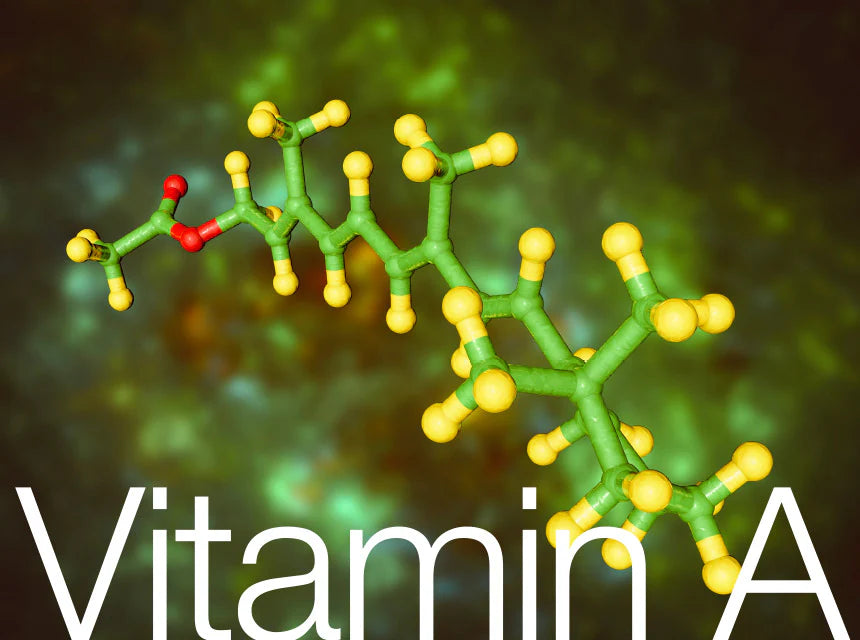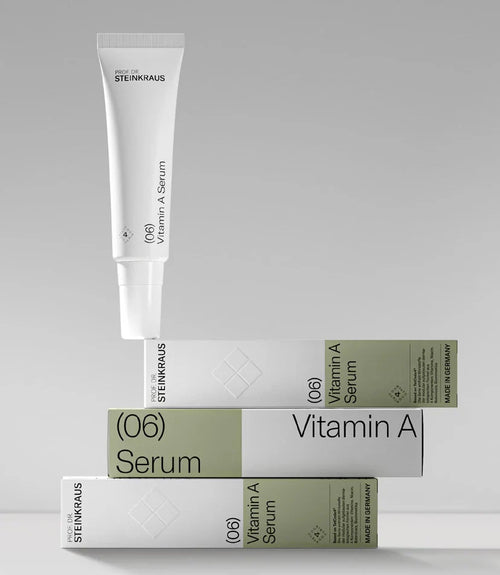
Vitamin A
When it comes to smoothing the skin and visually improving its texture, there's no single substance that can compete with vitamin A or its relatives. The question isn't whether, but rather how much can be achieved with vitamin A. Applied regularly in the evening, vitamin A is the all-time hero, or rather, the all-time champion.
In 1983, Cordero was the first to publish anecdotally the observation that vitamin A has a skin-rejuvenating effect. In 1986, one of the greatest dermatologists of all time, the American Albert Kligman , systematically investigated and published the effect of vitamin A on smoothing skin in several test subjects. In the years that followed, it was in particular the research group led by John Voorhees at the University of Michigan that investigated and described the biochemical mechanisms underlying the topical application of vitamin A and its relatives in large-scale studies. Some of the results were published in the world's most respected medical journals, such as Nature or the New England Journal of Medicine . Vitamin A is followed by nothing for a long time, followed by substances such as vitamin C, vitamin E or even niacin, before nothing again for a long time. Anyone who takes rational care of their skin and wants to improve the structure of their skin cannot avoid vitamin A.
Vitamin A is found in animal products and as a precursor (provitamin A) in plants, especially carrots and tomatoes. It is stored in the liver and influences countless metabolic processes in our body. Vitamin A is of interest to the skin because it is a relatively small molecule that penetrates the skin excellently due to its high fat solubility.
Vitamin A improves numerous skin disorders and also has a positive effect on healthy skin on many levels. It cleanses, exfoliates (thinns and peels the dead skin), thickens the epidermis, combats blemishes, regulates sebaceous glands, evens out pigmentation disorders, regenerates the skin after sun damage, and inhibits enzymes that destroy collagen. This latter effect enables vitamin A to smooth the skin and eliminate fine lines.
Skin aging has numerous causes. Genetic skin aging affects all skin cells, whether on the buttocks or the tip of the nose. It is a manifestation of normal aging and is primarily controlled internally. External skin aging is grafted onto this. This only occurs where the skin is continuously exposed to UV or external light. This external skin aging is primarily caused by UV light leading to the accumulation of oxygen radicals, which in turn activate collagen-destroying enzymes.

The epidermis is very thin, measuring approximately 0.1 mm in diameter. The thick dermis, which gives the skin its structure, forms the main cross-section of the skin. It is several millimeters thick. It consists primarily of collagen fibers and, to a lesser extent, elastic fibers. Collagen fibers are subject to constant remodeling. If collagen degradation is intensified, as collagen-destroying enzymes are activated by oxygen radicals, the connective tissue structure of the dermis becomes so disrupted and deranged that collagen disappears, which in turn promotes the premature formation of wrinkles.
Vitamin A inhibits collagen-destroying enzymes. This silences them, preserving collagen and preventing disruption to its regeneration.
The optimal concentration is 0.3% vitamin A (retinol). This is highly effective without excessively irritating the skin. Since vitamin A is photosensitive, it should be applied in the evening. Ideally, vitamin A should be applied only twice a week initially (e.g., only on Mondays and Thursdays). After 3-4 weeks, the application can be increased to 3 times a week. If you tolerate this well after a few weeks, you can also apply vitamin A every evening.